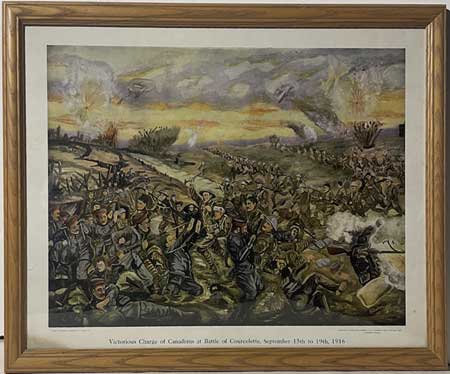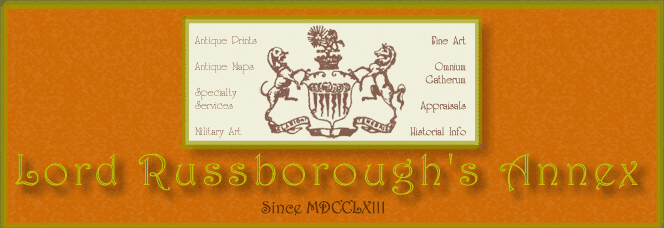
VICTORIOUS CHARGE OF CANADIANS AT THE BATTLE OF COURCELETTE SEPTEMBER 15TH. TO 19TH, 1916
Offset lithograph from the original painting by E.P. Gartlan [1917] published by Harrington and Barrett, 46 St. Alexander St., Montreal Quebec-copyright Canada.
Size 16 ½ x 22” glazed, wood frame size 20 ½ x 27 ¼” Ref. GC15(210)/EN/a.anae>DSN PRICE CODE B. SOLD
Two lines of Canadian Infantry are depicted advancing toward and engaging German troops below the ruined village of Courcelette. Exploding artillery shells, Bi planes and a damaged observation balloon are also seen. The Battle of Courcelette, or the Battle of Flers-Courcelette, was part of the Somme Offensive during the First World War. The Battle of Courcelette was fought from 15 to 19th. September 1916. It resulted in thousands of battlefield casualties, but also signalled the start of new thinking in military tactics that would eventually solve the riddle of the trenches and help turn the tide of the war. Tanks were used in battle for the first time during the Battle of Courcelette as well as the creeping artillery barrage. At 6:20 on the morning of 15 September, the 2nd and 3rd Divisions attacked German lines outside of Courcelette. Accompanied by one tank and following behind a creeping artillery barrage, they overtook the German trenches and a sugar refinery by 8 a.m.
Later that day, at 6 p.m. the 22nd Battalion (French - Canadian) ‘Van Doos’ and the 25th Battalion (Nova Scotia Rifles) attacked and captured the village through hand-to-hand fighting and with the help of two tanks. The Germans mounted several counterattacks, which the Canadians pushed back for three days and three nights. (Canadian Encyclopedia)


